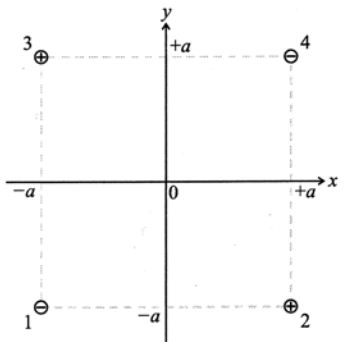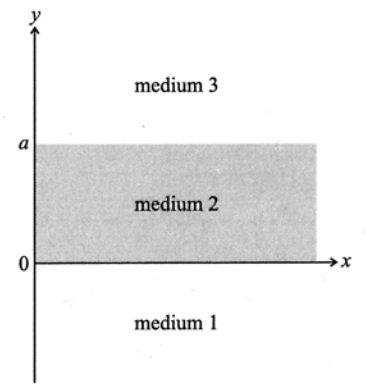Discuss the below:
Electrostatic potential
Q(a) Four point charges are placed at the vertices of a square as shown in the diagram. The charges are of equal magnitude, Q, the sign of each charge is given in this diagram

(i) What is the value of ∇x E at all spatial points in this con?guration of charges (note that the charges are stationary)? What is the signi?cance of this result?
(ii) What is the electrostatic potential, V, at the following points: (0,0), (0, +a), (+a, 0)?
(iii) How much total work must be done to bring a charge of -2Q from spatial in?nity and place it at the origin?
(iv) With this ?fth point charge at the origin, how much total work must be done to place a sixth charge of +Q at the point (0, +a)?
(b) A dielectric slab (medium 2) is placed in the plane y = 0 and is surrounded by two other media as shown in the adjacent diagram. The relative permittivities are εr1=2.5 for y<0,εr2=2.0 for 0
r3= 1.0 for y>a

None of the media contain any free volume or surface charge. In medium 3 there is a uniform electric ?eld. Vm-1
E3= î+3j^
(i) State the boundary conditions on D and E at the interface between two materials.
(ii) Find the electric ?eld, E2, the electric displacement, D2 and the polarization vector, Pg, in medium 2.
(iii) Find the surface density of bound charge on both sides of the boundary between media 1 and 2, and on both sides of the boundary between media 2 and 3.
(iv) Does the magnitude of the electric ?eld vary from one medium to the next? If so, in which medium is the magnitude of the electric ?eld the greatest?